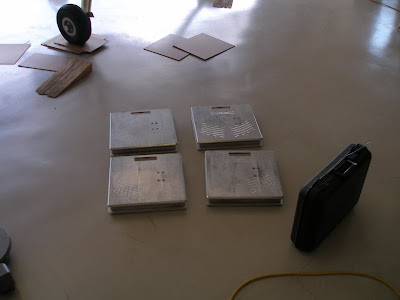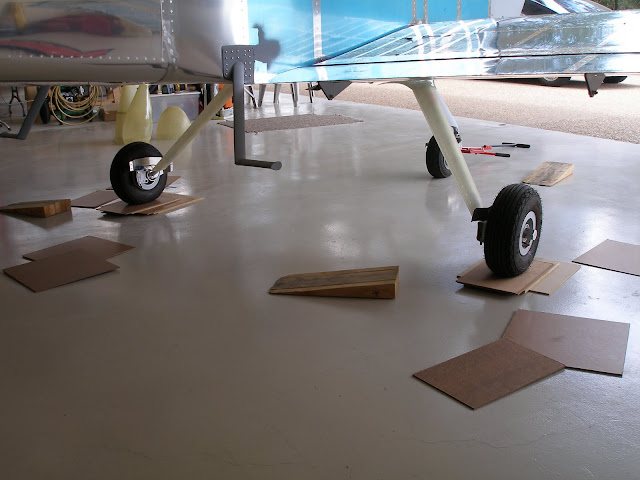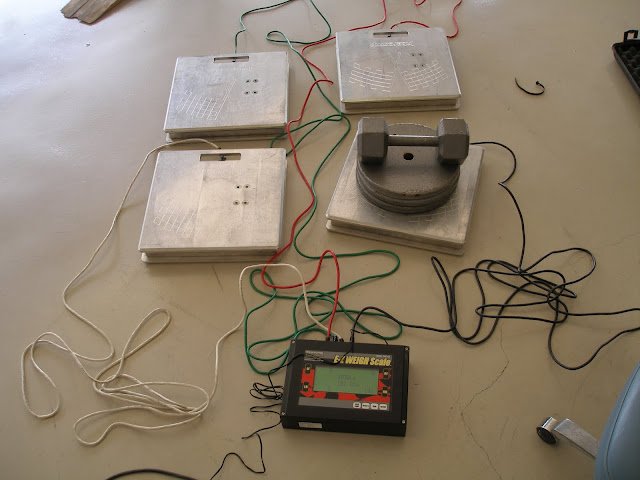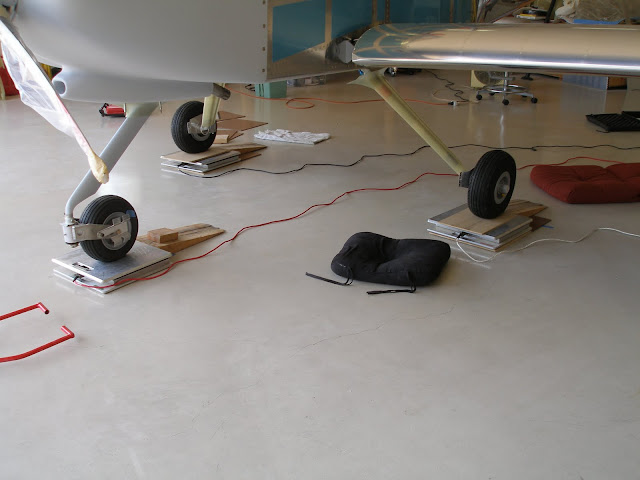6 hrs
Did the Weight and Balance today.
Drove to Georgetown and picked up the EAA 187 scales.
 Got a race car you need to weigh?
Got a race car you need to weigh?
Made up a set of tare boards for leveling
First leveled the plane. Here it is with the boards arranged to get the plane level.

Then I checked the calibration of the scales. I used 101 pounds of weight plus my own weight. The bar bell is supposed to be 25, but I got a bargain because 5 scales think it weighs 26. The plates are all right on 25. All four scales had the same numbers as each weight plus my own were added. I think that's accurate enough, although that isn't quite the range needed for the main gear load.
 Calibration - 101 is the correct number
Calibration - 101 is the correct number
Then I rolled the plane up the ramps. I didn't have enough traction to pull it up, so I got three chocks and moved each wheel up by hand about a centimeter at a time. I have blisters and sore legs from making dozens of laps around the plane, and getting up and down 3 times per lap.

Then started taking measurements, remembering to close the canopy. Measured with bare airframe, 1056 lbs, 6 lbs over my guess. Then added seats, seat belts, and wheel fairings. The total for all this is 1072, quite a respectable number. The usefull load is then 678 pounds, which allows for full fuel, 100 lbs baggage, and two standard weight people.
 This is weight without wheel fairings.
This is weight without wheel fairings.
Later I came back and measured gear leg stations from the datum, which is 70" from the wing leading edge. First I had to accurately lay out the datum line, then measuring from that was straight forward.
Heres the data:
Nose Wheel 242 lbs @ 33.25"
Right Main 415 lbs @ 91.0"
Left Main 415 lbs @ 91.0"
I've borrowed spreadsheets from this
search on VAF and modified them for N207LT.
Here is one
calculator, and here is a
scenario calculator.
The result is a perfect situation. By myself I am usually flying in utility category, and with a standard weight pax I can't load it out of CG!